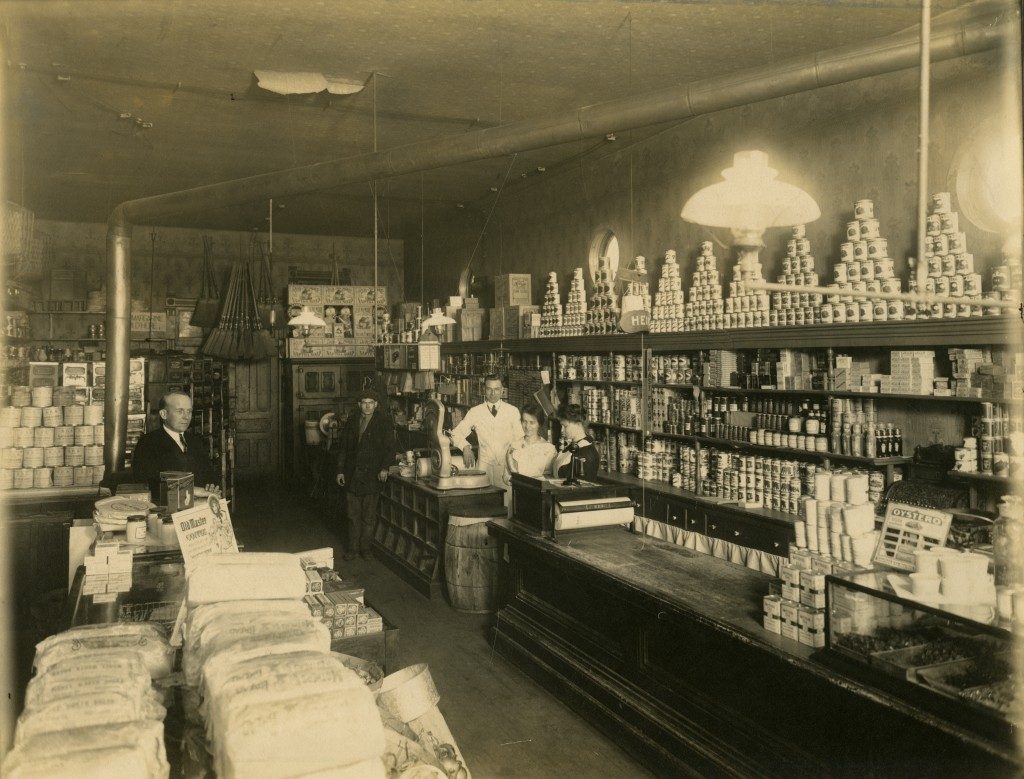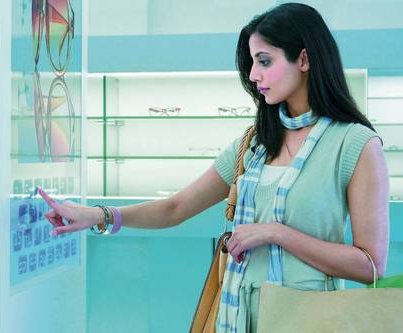We’ve only just got over the summer holiday season and we’re well on the way to Christmas. You have probably already had some mail through the door which is festive related, and as a retailer I’m fairly confident you’ll already have ordered and perhaps even received Christmas stock. Time just seems to pass so quickly these days! It got me thinking; what will shop fittings be like a hundred years from now?
 Will you still be ordering Slatwall, shop shelving and counters? Hmmm, possibly. Will we even have shops? I think so, after all us ladies are rather fond of a bit of retail therapy. In order to think about the future, it sometimes helps to look back 100 years to 1915. The basics are the same. There is a room/building/stall to which we go, we browse products and merchandise and then we make a purchase using cash. Three main differences are immediately obvious; firstly, retailers specialised. You went to the butcher for meat, the ironmonger for tools, the grocers for fruit and vegetable but today we can buy everything we need under one roof (well, almost) in a supermarket. Secondly; cash, everything was bought and paid for with cash yet now we bank cards. The third is the evolution of the digital age; instead of popping out to town or into the city, we can sit at home browsing the huge array of stores available to us on the internet.
Will you still be ordering Slatwall, shop shelving and counters? Hmmm, possibly. Will we even have shops? I think so, after all us ladies are rather fond of a bit of retail therapy. In order to think about the future, it sometimes helps to look back 100 years to 1915. The basics are the same. There is a room/building/stall to which we go, we browse products and merchandise and then we make a purchase using cash. Three main differences are immediately obvious; firstly, retailers specialised. You went to the butcher for meat, the ironmonger for tools, the grocers for fruit and vegetable but today we can buy everything we need under one roof (well, almost) in a supermarket. Secondly; cash, everything was bought and paid for with cash yet now we bank cards. The third is the evolution of the digital age; instead of popping out to town or into the city, we can sit at home browsing the huge array of stores available to us on the internet.
Shopfitting has changed too, but not as much as you might think. A hundred years ago there were no fancy slatwall panels or modular shop shelving, instead carpenters built shelves and counters by hand and most merchandise was displayed in sacks, boxes and tables. In this modern world, we manufacture a lot of shopfitting furniture by machine; some of it is even flat packed for self-assembly as society demands a cheaper product and a fast turnaround. Some companies, such as Crown Display, keep up with modern society whilst retaining some of the specialised skills required to manufacture counters and display units by hand.
So, back to the future (isn’t that a movie title?). I believe technological advancement will mean  that in a hundred years we will see the digital age much more obvious in the stores we visit. Shopfitting will incorporate installing the latest ‘computers’ and holographic technology which will measure us for clothing and make it to fit. Stores will be fully automated; we’ll use screens to choose our items which will be delivered over some futuristic transport network direct to our home. We may pay using our fingerprints or DNA and so shopfitting will need to incorporate technology. We might still be installing slatwall panels but on it will be hung a digital screen instead of a product. There will be a demand for counters, but ones which are manufactured to include fingerprint or DNA ‘cash registers’. Shopfitters might even have to install iris recognition hardware and software to even enable us to enter the shop in the first place!
that in a hundred years we will see the digital age much more obvious in the stores we visit. Shopfitting will incorporate installing the latest ‘computers’ and holographic technology which will measure us for clothing and make it to fit. Stores will be fully automated; we’ll use screens to choose our items which will be delivered over some futuristic transport network direct to our home. We may pay using our fingerprints or DNA and so shopfitting will need to incorporate technology. We might still be installing slatwall panels but on it will be hung a digital screen instead of a product. There will be a demand for counters, but ones which are manufactured to include fingerprint or DNA ‘cash registers’. Shopfitters might even have to install iris recognition hardware and software to even enable us to enter the shop in the first place!
What do you think a future shop might be like?
No matter what the future looks like, as long as we have physical shops, we’ll have shopfitting.



